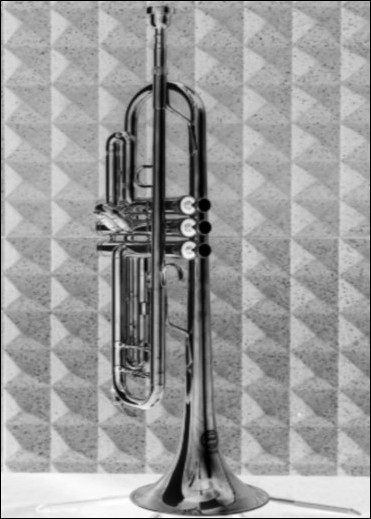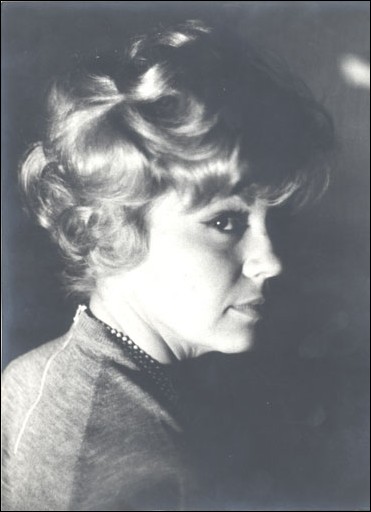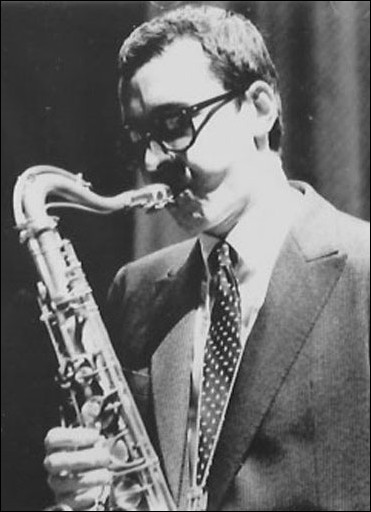Piero Umiliani - The Official Website - International Version
Main menu:
Collaborations
Music, Maestro!
In his long career Piero Umiliani works together with internationally famous jazz musicians. This page collects a few short memories written by the Maestro in the 1990’s, in occasion of the re-release of CDs with those valuable collaborations.

OSCAR PETERSON
I wrote “Chanel” when I was 24 years old.
The first recordings of this theme were on 78 LP albums with the Orchestra of Franco Chiari and Toni De Vita.
I was very attached to this theme and in 1956, when I decided to send music scores to publishing companies around the world, “Chanel” was always included in that repertoire which I hoped could attract some interest.
Among the many addresses I had Marks Music of New York City, and Oscar Peterson, an extraordinary jazz musician and also one of my favourites, used to stop by their office.
By chance my “Chanel” score ended up in Peterson’s hands who, after having listened to it, said to Marks Music Manager: “I want this theme for my next album”.
I was contacted by the publishing company and so in 1957 “Chanel” was included in the “Soft Hands” album for Verve jazz label, released also in 7" extended play.
Together with Peterson there was the Bunny Bergman Orchestra with soloist Herb Ellis on the guitar, Ray Brown on the bass and Stan Levey on the drums.
But the most wonderful thing happened a few years later when my wife Stefania and I went to the Sistina theatre, where Oscar Peterson was having a concert of his Italian tour. At one point Peterson started to play the notes of Chanel and I felt an incredible emotion.
At the end of the show I went backstage, along with many other fans. Like a movie star, Peterson had bodyguards to protect him.
I did not speak English but fortunately we were with the American wife of a friend of mine and so she explained who I was.
Finally they let me in and using gestures and broken English I told Peterson I was the author of Chanel.
He thanked me and signed my music score, but instead I was the one who had to thank him.
.
CHET BAKER
Twenty-eight years have gone by since I first met Chet Baker, and six have passed since I last saw him. He was a sad and dramatic man and his only joy was to play music. When I first saw him he was extremely sweet and only spoke English but later, after having spent some time in jail in Volterra, he started to speak Italian. At our very last meeting I saw a calm, sweet little old man. As soon as he saw me he greeted me saying: “Dear Maestro.” I bursted into laughter and replied: “If I am a Maestro, then what are you? You have accomplished much more than me!”
I am so happy to link my name to his. I offered him three notes and he made something
beautiful out of them. The idea was mine, the creativity was his. Last year, when I came to know that he was lost for all of us, I thought about the two films I had made with him. I think he liked my music, otherwise he would have told me. A year later I had the idea to make a CD with the music of our Italian movies. I had just seen a beautiful film on Chet’s life, “Let’s Get Lost”. Bruce Weber, the director, had used a short excerpt from the movie “Howlers of the Dock” by Lucio Fulci starring Mina, Adriano Celentano and Chet both as an actor and singer.
I wrote the soundtrack for that film in 1957. Near the theatre there was a recording studio. While I was recording the soundtrack, Chet stopped by with his trumpet. He had just finished a scene of the movie. We were playing “Improvviso in Blues” and the soloist was improvising. Unexpectedly, Chet started playing. After “Improvviso in Blues” he played also “Furtivamente”.
Looking again at that scene, listening again to that music, thirtytwo years later, moved me deeply, because that had been our first meeting. Then I had another chance to play with Chet, in the soundtrack for “I Soliti Ignoti”. We were at Cinecittà and I was rehearsing with an octet, waiting for Chet to arrive. The film producer had sent a car with a driver to pick him up, to assure that Chet would arrive on time. Chet got in the car and told the driver to take him to Termini Railway Station, where he had to stop only for a few minutes. Once he got off the car he just disappeared. He had taken the first train to Germany.

No news coming from Chet, the producer insisted to find another soloist but I refused. I hoped that Chet would come back, sooner or later. I was right and three days later Chet came looking for me. He almost did not recognize me, he was walking with his eyes closed and I was worried thinking how he could play in that state. We were told that he had gone to Munich looking for drugs. When he got to the recording studio he did not even have his trumpet with him, he had forgotten it somewhere. But he had his mouthpiece that he had found in his pocket. He borrowed a trumpet from another musician and we started rehearsing. He played beautifully. He just listened to “Alone in a Crowd” and we recorded it immediately. He played the whole melody of the first refrain and improvised in the second. Naturally I left much space for improvisation in my compositions. Chet’s interpretation of “Tension” was fast and clean on both recordings that later I edited together. During his performance he played a part which at first seemed wrong, but on that he built a riff and there, you had a new idea! The five themes of the film were played in less than three hours. Chet did not read music, but listened to the strings. In “Smog” he played with 5 trumpets, 4 trombones, 5 saxes, vibraphones, guitar, bass and drums, plus 12 violins, 3 violas and 3 cellos. I do not think he ever played again with such an accompaniment. I also remember that he really enjoyed to play surrounded by 40 musicians, while the film was rolling on the screen. Even then, he just listened to the theme once and after he played excellently the six minutes of “Twilight in Los Angeles”.
.

HELEN MERRILL
What more could I say about Helen Merrill? I think that we already know everything about her. When she swings her voice is sensual and full of style. She knows how to select the best songs and the best jazz musicians.
I discovered her first record in a small store in Florence, in 1954. The record had been made in New York City where she lives and works. Among the musicians playing with her in the record, there were Clifford Brown, Jimmy Jones and Oscar Pettiford while the music had been arranged by Quincy Jones. I was particularly struck by the song “What’s New?” and I think I must have listened to it a thousand times, night and day. I personally met Helen at the RCA studios in 1962.
She had just arrived from New York and I was very excited at the thought of meeting her that morning. I remembered her picture on the old album cover where she appeared lively and sexy. When I met her I realized that she was very different from what I had imagined. Immediately she struck me with her simplicity. I remember asking her if she had made hotel reservations and she answered that she hadn’t. I told her that it was Christmas time and it would have been almost impossible to find a hotel room, so I suggested her to stay in my apartment studio where we could work together undisturbed.
We were working together for an Italian TV show. I had created a jazz show entitled “Moderato Swing”, shown on TV once a week at 10:00 PM. Helen had to sing one song in each show. I was directing the RCA Big Band and presenting the most important jazz musicians: Duke, Basie, Woody Herman, Goodman, etc., etc.
It was a big success.
This is how our collaboration started. Besides choosing together the12 songs that she had to sing in the shows, she wrote the lyrics for three of my themes: “My Only Man”, “Dreaming of the Past” and “Dawn”.
When I met Helen she could only speak English, but after a few months she was able to sing “Estate” in Italian and I think this is one of the most beautiful songs I have ever heard.
.
GATO BARBIERI
I first met Gato in 1965, when he had just arrived in Rome.
He already played beautifully, but nobody knew him. He started working pretty soon as a musician in the RAI studios.
I don’t remember exactly how we met, but I had to record two soundtracks and I needed good musicians so I hired him right away.
Gato was a nice, calm man and he looked just like an office clerk, always well dressed and with his hair cut very short. At that time he did not wear yet his well-known black hat. Years later he had his great chance: he was asked to compose the soundtrack for “Last Tango in Paris” by Bertolucci.
He called me, asking me to write the arrangements but then, when the time came, he did not call me anymore. Afterwards I heard that, not surprisingly, he had chosen Oliver Nelson for the job!
The huge success of “Last Tango in Paris” was not only due to Gato as a composer but – I believe- as a saxophone player.
Since then we have not met anymore and I was always very busy with my own job.
There isn’t much to say about the two films on which we worked together. The music for “Una Bella Grinta” was performed by a quintet.
However I have a story to tell about my soundtrack for “Sweden, Heaven and Hell”. In the finale the strings were added electronically, which was something very unusual at the end of the 1960’s. I had built a sort of “instrument”: a 16 track AMPEX recorder, with its own keyboard. Playing on the keyboard, the strings were recorded on each channel. Gato asked me the name of this instrument.
I had not thought of a name before and so, quite incongruously, I answered “sarchiapone” a nonsense Italian word I had once heard in a funny movie.
In the soundtrack of this film there is the song “Sleep Now, Little One” a lullaby by Lydia McDonald which Gato reinterpreted in an instrumental version.
This version is so different from the original, that we decided to change the title and we called it “Solitudine”.
